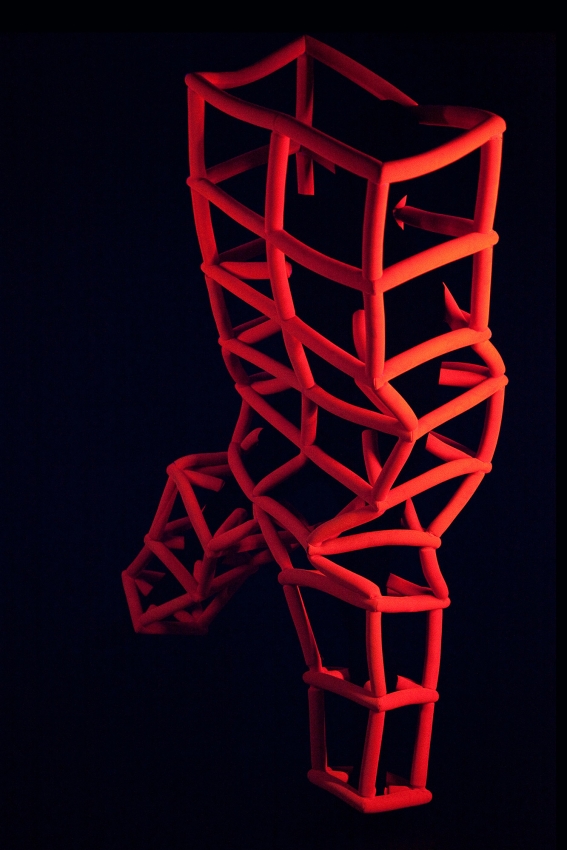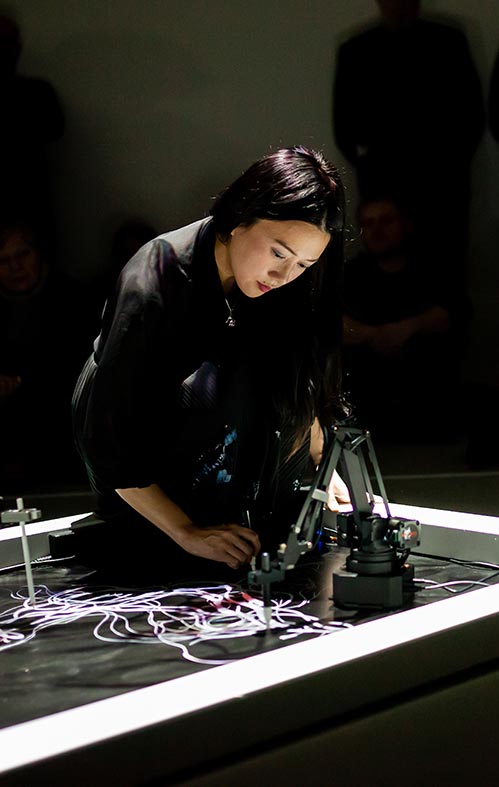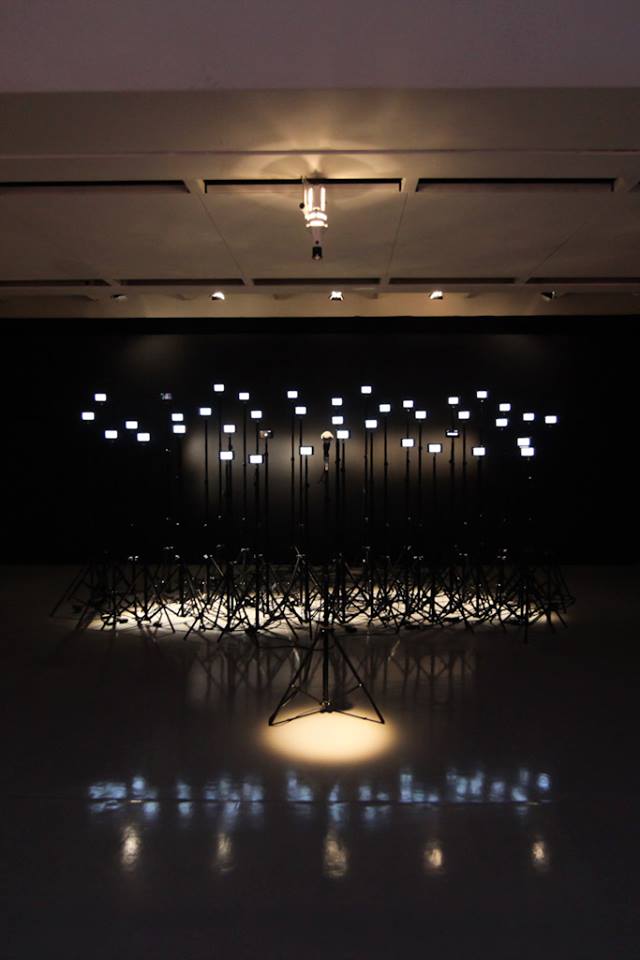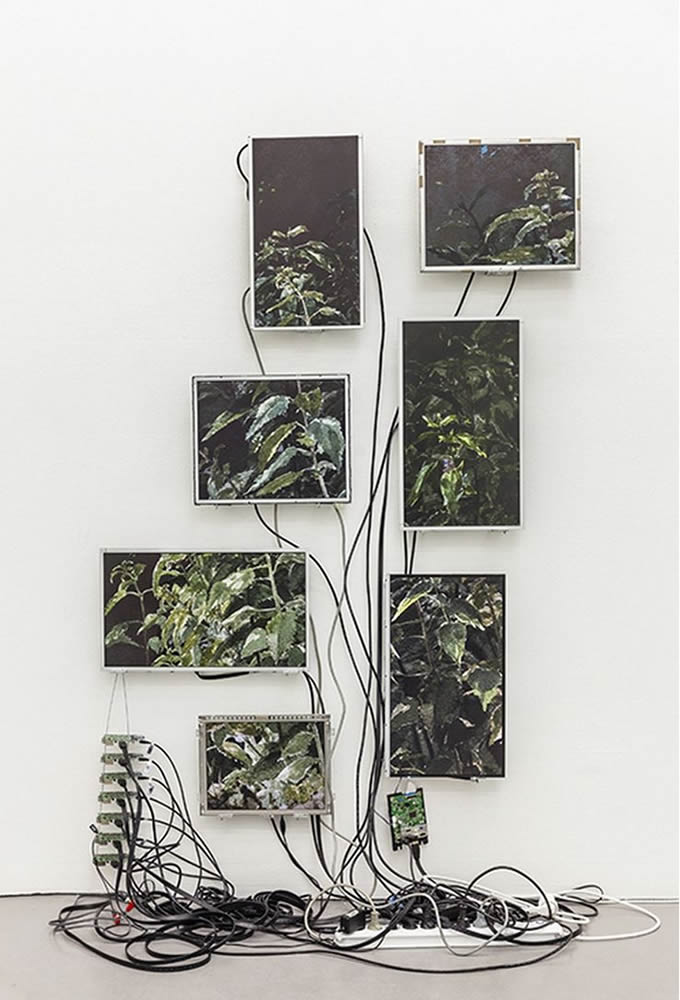A giant rail construction with an organically spiral-shaped spatial structure is put up in the exhibition space. Rolling on that rail are countless balls with built-in full-color LEDs and communication devices. From terminals set up inside the venue, visitors can send commands to the balls to control the timing and coloration of their blinking, and thereby draw three-dimensional afterimage in the air. Through the fusion of a minutely designed rail construction and communication control technology, an unprecedented form of spatial expression was realized in the form of a flexible “light structure“.

Roman Ermakov
Роман Ермаков
live sculpture
Our perception — the only true reality. Creation as a feeling that generates the image, expressed in the form. Beauty manifesto calling to go beyond that limit imagination. The aesthetics of art can not be reduced to a clear set of building blocks with which you can strengthen or weaken the perception of contrast. Beauty should not be subjected to analysis, that is communication and the call to participate in the transformation of the emotional to the visible.The process of creating — is the alignment of the mosaic, many repetitions of simple and pure elements, which form a collection, harmonious in its incompleteness.

















